A Spirit of Sacrifice at the State Museum
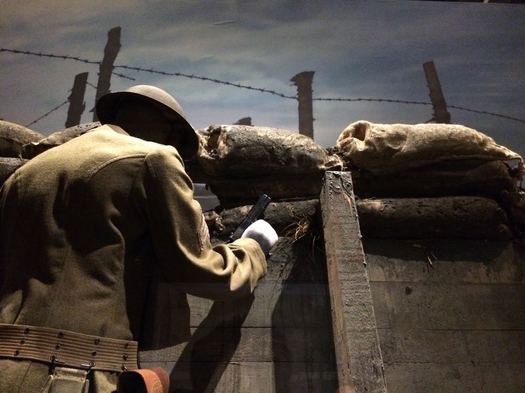
The State Museum opened a new exhibit Friday -- A Spirit of Sacrifice: New York State in the First World War -- that commemorates the 100th anniversary of WWI. Exhibit blurbage:
A Spirit of Sacrifice examines how New York State and its citizens played a critical role in the United States' efforts during the war, and discusses its significance to understanding history today. Both on the battlefield and on the home front, through industrial production as well as civic participation and debate, New Yorkers had a considerable impact on the shaping of these events. By the end of the war, the Empire State would lead in the number of soldiers, tonnage of supplies, and money raised to support America's efforts.
We got a chance to check out the exhibit with curator Aaron Noble and exhibit designer Craig Gravina. Here are five bits about it...
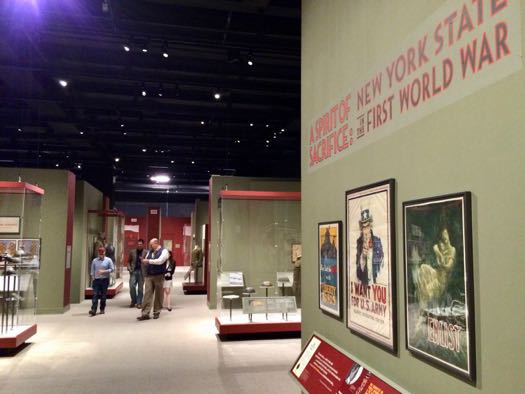
New York -- and New Yorkers -- played a big role in the war
Of the soldiers the United States sent over to Europe to fight in the war, one in ten were from New York State, Noble said. (New York was the most populous state in the nation during the 1910s.) And beyond the contribution of soldiers, New York companies led the nation in war-related government contracts, with firms such as Remington (Illion), GE (Schenectady), and Kodak (Rochester) producing equipment or services for the war.
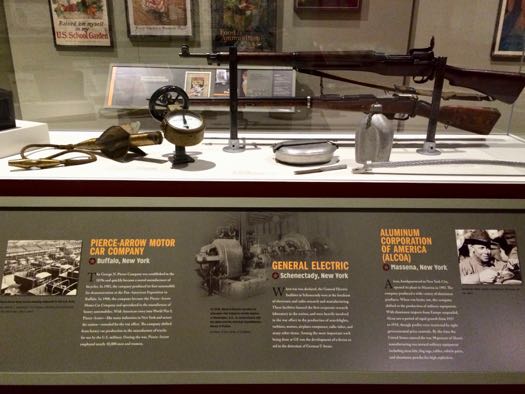
The exhibit illustrates the many topics related to the war with stories and profiles of New Yorkers. "We wanted to be able to put a face to the conflict," Noble explained.
He said the exhibit draws materials and artifacts from historical societies and collections from all around the state. And the details about New York's role is bolstered by a huge collection of research that had been assembled shortly after the war for a report that ultimately was never filed and had just been sitting in archives.
"The depth of the archival material that was available to us was astounding," said Noble, who worked on the exhibit for 3.5 years.
The posters
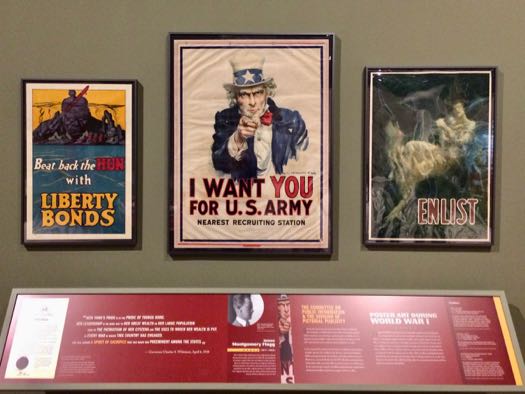
One of the main components of the exhibit is a series of posters drawn from the collection of the State Library. As Noble explained, posters were a key medium in the US government's efforts to sway public opinion toward intervening in a war that many people viewed with reluctance. (So, in other words, the posters were propaganda.)
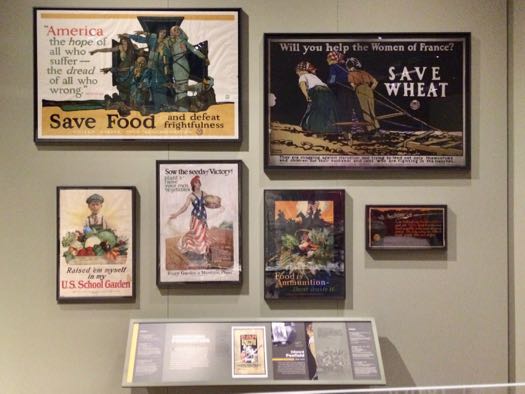
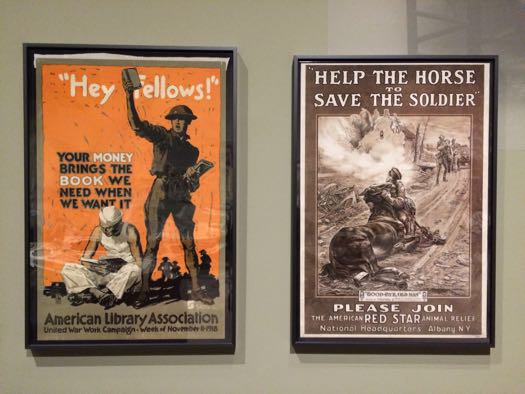
And that famous Uncle Sam recruiting poster? It's originally from WWI. Its designer, James Montgomery Flagg, was a New Yorker.
The trench
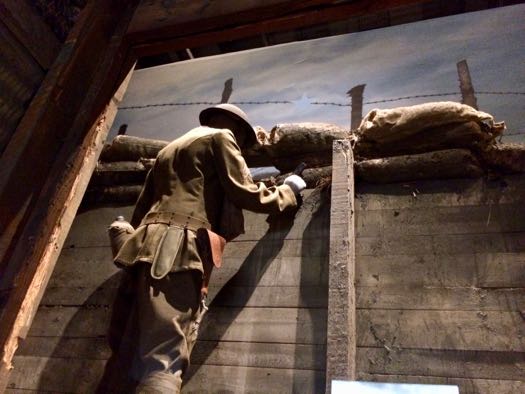
Trenches were a prominent feature of the WWI battlefield. And the State Museum exhibit includes a walk-in diorama designed to give some sense of the dismal conditions in those spaces. It's dark, cramped, smeared with (fake) mud, and even includes (taxidermied) rats.
"This is what the conditions were that these men lived in," Craig Gravina* said while we looked at the diorama. "They were deplorable conditions."
Henry Johnson is featured, but for something different
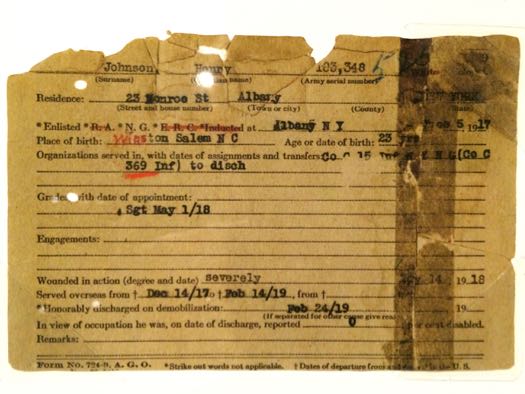
You know the story of Henry Johnson. And the exhibit mentions the heroism for which he was (finally) awarded the Medal of Honor in 2015. But Johnson is featured in the exhibit for the part of the story that often doesn't get as much attention: The lack of assistance that veterans experienced after returning from the war.
Many faced hardships in getting back to their regular lives, including Johnson who had suffered serious injuries during the war. And though he was initially hailed as a hero, the government quickly brushed him aside after he started to speak out about the racism African Americans had experienced while in the armed forces and the treatment veterans got when they returned. He'd die in poverty, estranged from his family, age 32.
Some of the issues still echo today
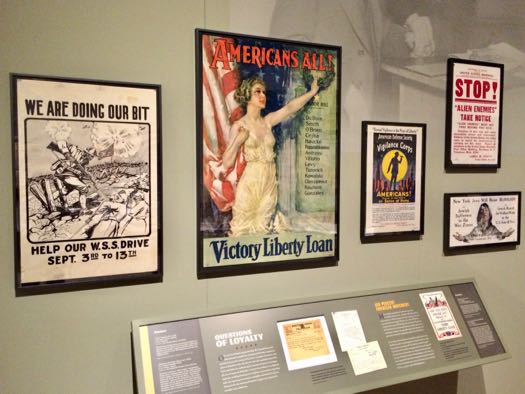
Though the exhibit doesn't specifically call out connections between that period and now, some of the issues clearly echo today. Among the most prominent is the question of how the United State views itself as a multi-cultural nation.
Aaron Noble said there were questions at the time about the loyalties of immigrants in the US who still had ties to Europe -- Germans especially. This was especially true in New York, which had large populations of immigrants from all over Europe.
Many of these New York immigrants -- as well as African Americans, who, of course, were also marginalized in American society -- ended up serving valiantly during the war. And units such as the "Fighting Irish" of New York's 69th Infantry Regiment and the "Harlem Hellfighters" of New York's 369th Infantry Regiment gained fame for their service. But suspicions lingered.
Where to find the exhibit
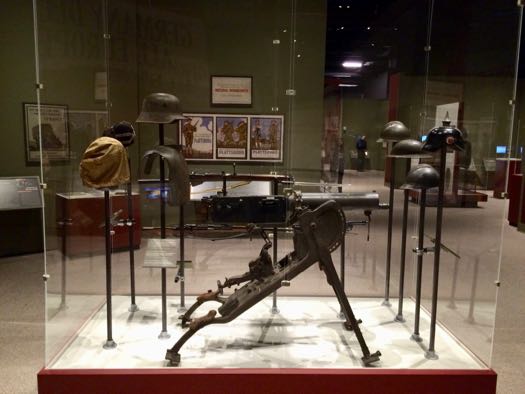
A Spirit of Sacrifice: New York State in the First World War is located in a gallery in back of the State Museum. Go to where the mastodon is, and look to the left. It's on display through June 2018.
____
* As you might remember, Craig has worked with AOA on the Bootleggers tour.
... said KGB about Drawing: What's something that brought you joy this year?